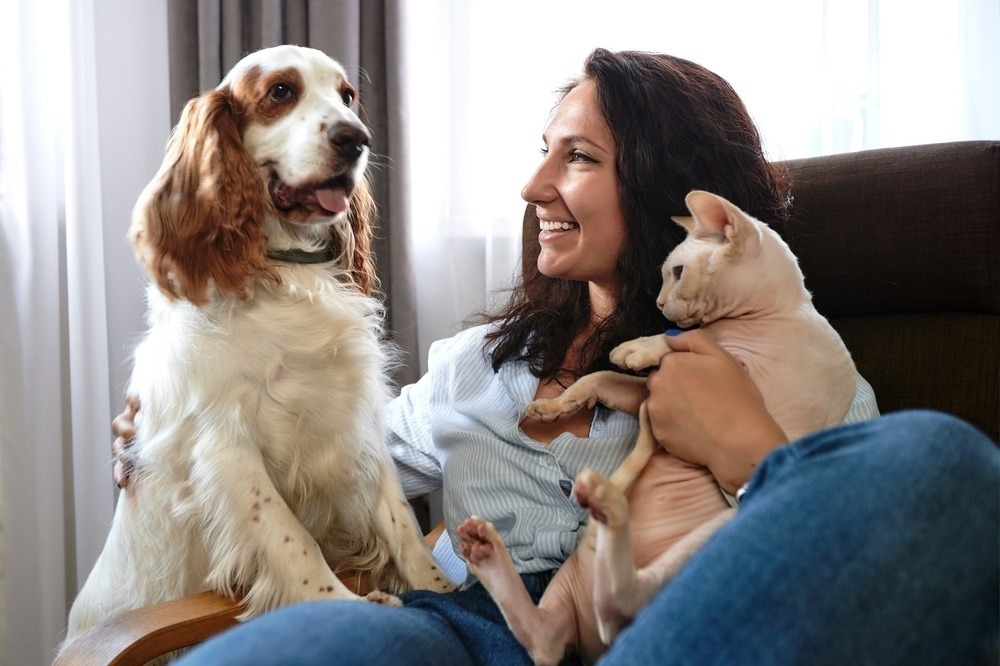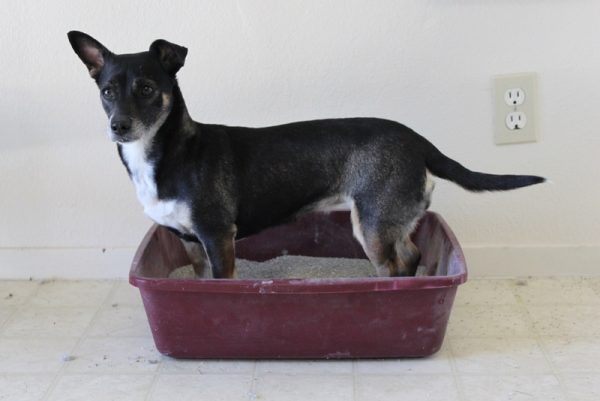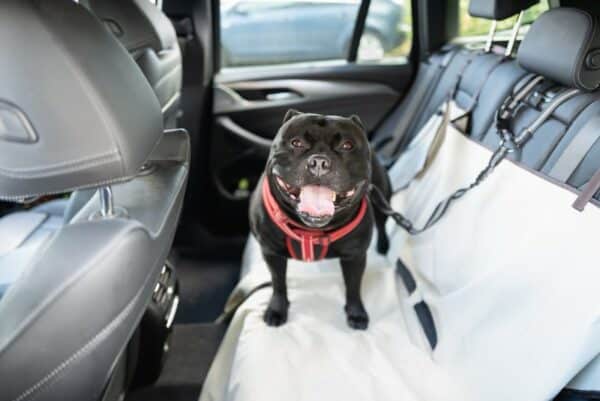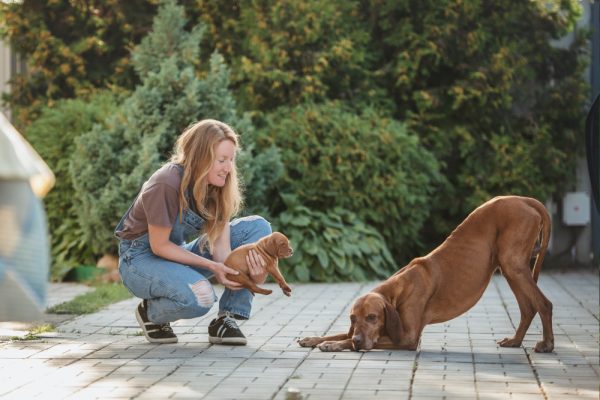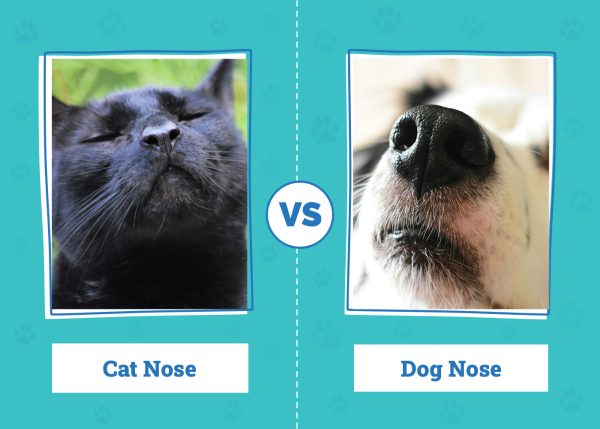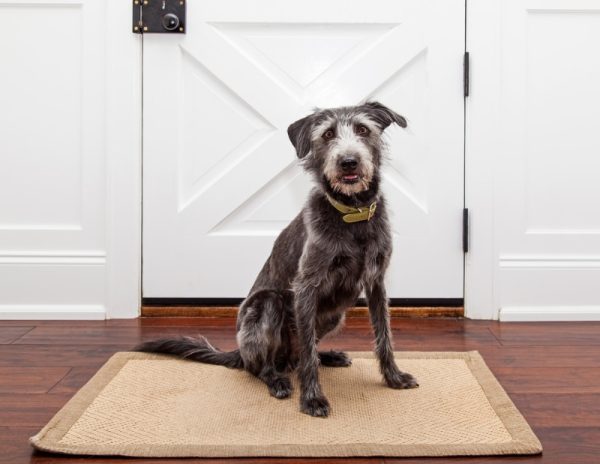What’s better than having a cat or dog? Having both! However, having both means successfully introducing the two so they can get along and become friends. This can be done with some careful planning, but you might wonder how to do this if you live in an apartment. After all, apartments have less space than houses, so how do you ensure everyone has the space they need when introductions first begin?
Introducing a cat to a dog in an apartment is not all that different from introducing one to the other in a house. You might need to get a bit creative when it comes to finding space, but it can definitely be done. To help you out, here are some tips and tricks for how to introduce a cat to a dog in an apartment!

Before You Begin
Before introducing your cat to your dog, you need to set up an area that is strictly for your cat in a room with a door. Your pets will not meet face-to-face at first, so this is where your cat will stay; it also allows them a dog-free space if they need it later. If you’re in an apartment, you might be limited to where this space can be (probably a bedroom or a bathroom). We recommend the bathroom, as your dog won’t be allowed to enter this room at first. Keeping the cat in the bathroom may be a bit inconvenient, but hopefully, they won’t have to stay there for long.
Even before bringing your new cat home, you can try and get both the dog and cat used to each other’s scent by swapping bedding between the two.
- A litter box
- Food and water
- Toys
- A scratching post
Now you’re ready to bring the cat home to start introductions!
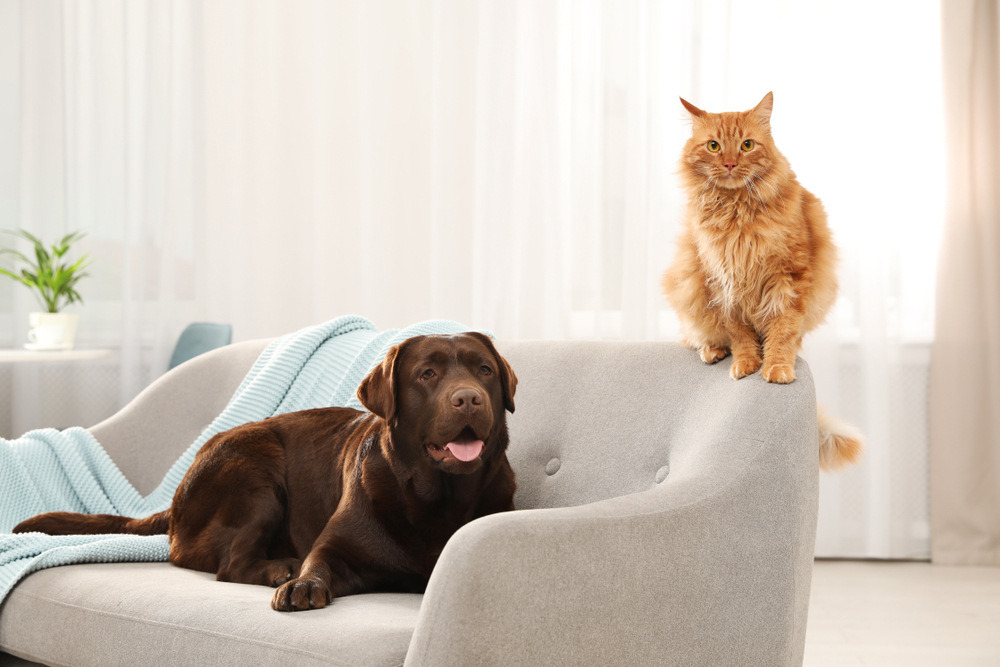
The 10 Tips for Introducing a Cat to a Dog in an Apartment
The most important thing about introducing two animals is to remember that the process will take time and a whole lot of patience. You can’t simply throw your animals in a room together and hope for the best, so be prepared to spend some time on this introduction!
1. Secure the Dog
The first time you bring your cat into your apartment, ensure the dog is hidden away in a different room. This allows the cat to safely explore most of the apartment and get used to all the new sights, scents, and more in their own time. If you think your pup might get a bit excited in the other room and start jumping against the door or scratching at it, crate them in that room. You want this experience to make your cat feel as safe as possible.
2. Put the Cat in Their Room
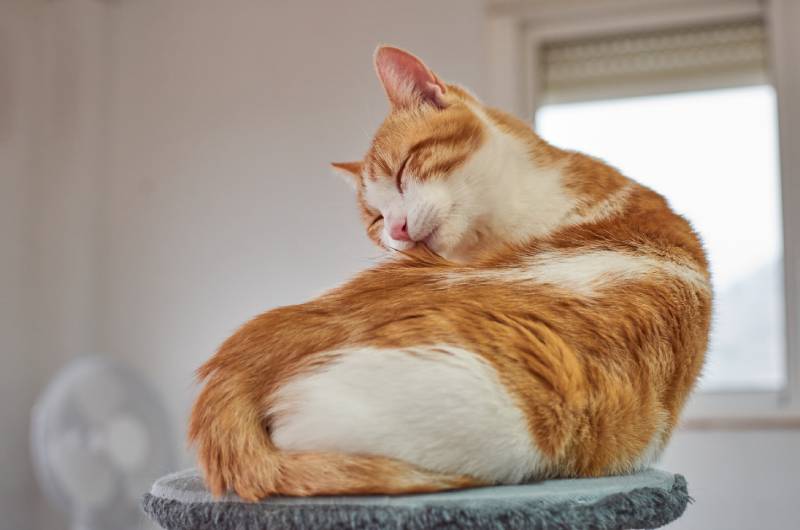
Once the kitty has explored to their heart’s desire, set them up in their room that holds everything they need and shut the door. You can let your dog out once that is done.
3. Keep Both the Cat and Dog Apart for a While
Your pets will need to be kept separate for the first three or four days. Even though your cat will be confined to their room, the two animals will still be able to smell and hear each other, which will help them get used to one another.
4. Exchange Their Scents
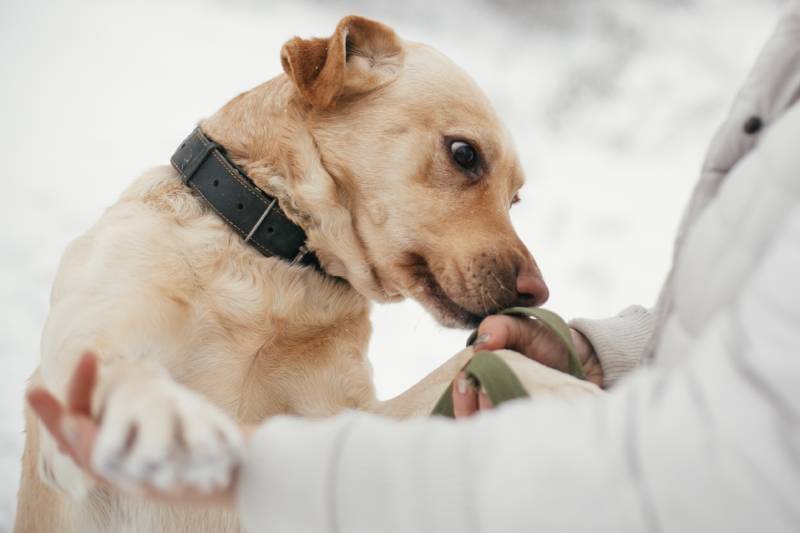
You can help your two animals get used to each other’s scents by giving your dog something that smells like your cat and vice versa. Rubbing a soft cloth on your cat’s head and then spreading the scent around the house, i.e. on furniture, will help your dog to associate the smell with home.
5. Begin With Food Association
The next thing you want to do is feed your cat and dog at the same time while they are on opposite sides of a door. So, keep your cat in their room and place their food bowl by the door, then put your pup’s food bowl on the other side by the door. This is meant to help your pets associate one another with good things (like yummy food!).
6. Get Out the Gate
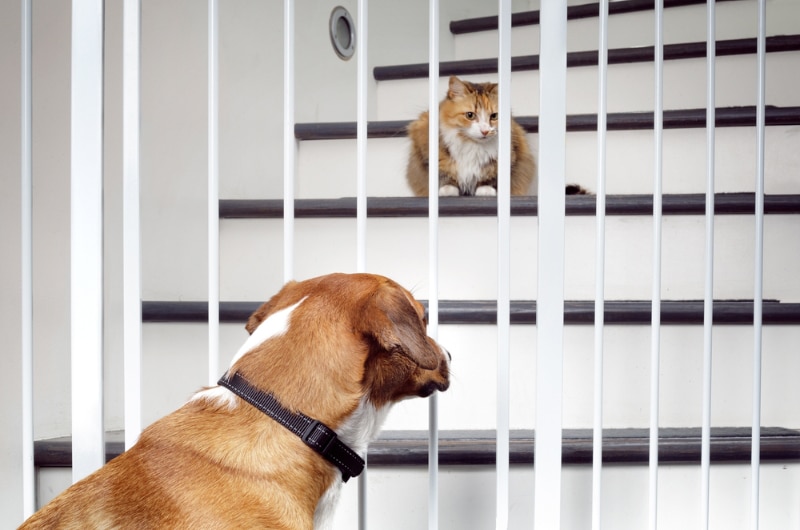
When eating on opposite sides of a door is a success, you can start attempting face-to-face meetings. However, a barrier is still needed, so replace the closed door with a gate. Make sure the gate is tall enough that neither your dog nor cat can jump over it. This gate allows your pets to finally see one another but keeps a distance between them in case one isn’t comfortable with the other.
Let your dog catch glimpses of the kitty through the gate, but if they seem overly focused on the cat, distract them with food and reward them for calm behavior. You might want to keep your dog on a leash during this period, too, so they can’t run over to the gate and scare the kitty.
7. Prepare for a Leashed, Ungated Meet (But Be on Guard!)
If, after a day or two of letting your pets view each other through the gate, they’re acting curious and non-aggressive, you can try an actual face-to-face meeting by letting the cat out of the room they’re in. You absolutely want to keep your dog on their leash for this!
Ask your pup to sit and open the gate for the kitty to come out. They may not want to, and that’s OK. If this is the case, you may need to do more of step 6. You don’t want to force your cat into a position it isn’t comfortable with and it should always be allowed to retreat if it wants to. Let your cat come out and go when they want, but keep these first few introductions short. Have your cat come out for a few minutes, then put the gate back up when they return to their room.
Have these short face-to-face meetings every day until your cat and dog appear to be used to and friendly with each other.
8. Get Them Both in the Same Room
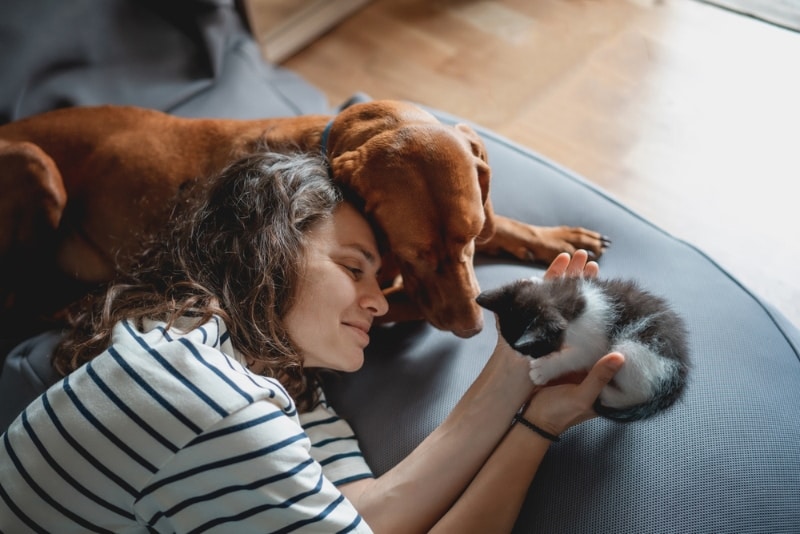
Finally, it’s time to let your pets loose in the same room! You still want to have your dog’s leash on them so you can quickly grab it if needed, but you won’t be holding it the entire time. Just be ready to stop your pup if they get overly excited and run after the kitty.
Try to have a cat tree or other tall area in your apartment where your cat can escape if they get scared by your dog. This will help the kitty feel safer.
9. Go Back to Leashed Interaction if Needed
If the initial meeting with both animals being loose doesn’t go well, go back to face-to-face meetings while your dog is on a leash that you’re holding. Do this for a few more days, then try having them meet on their own again.
10. Give Them Treats for a Job Well Done!
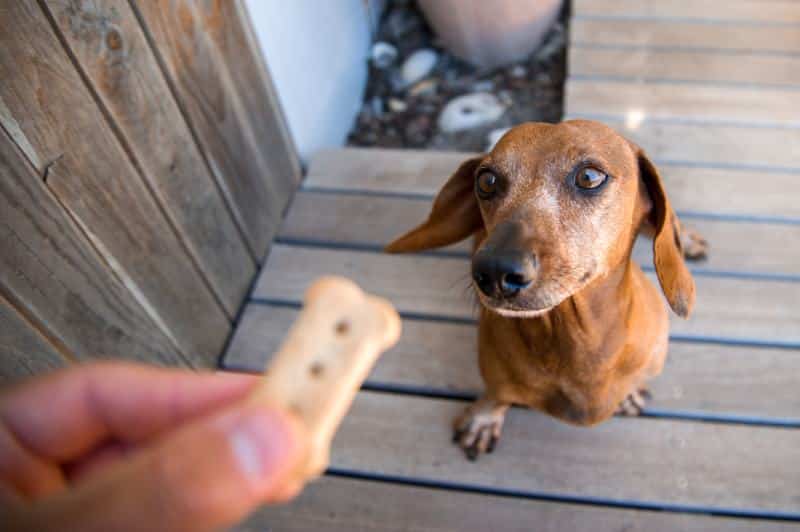
Reward both cat and dog when they manage to stay in the same room without getting afraid or overly excited!
Eventually, your cat and dog will learn to tolerate each other, if not become good friends. However, you’ll want to continue separating your pets when you’re out of the house until you are completely sure they get along exceptionally well.

Final Thoughts
Introducing a cat to a dog in an apartment really is not that different from introducing these two animals in a house. The most significant difference is a lack of space, which means you may have to get creative with where your kitty is getting their own space at first. It also means you want to be sure you have vertical areas your cat can run to if they get anxious or afraid around your pup, as this will help the cat feel safer.
Introducing pets takes time and patience, so try not to rush it! Your dog and cat will eventually get to be friendly enough with each other.
Featured Image Credit: Gerain0812, Shutterstock
